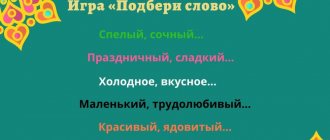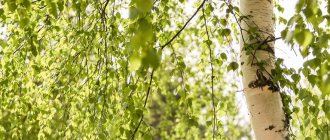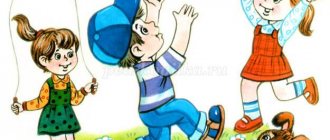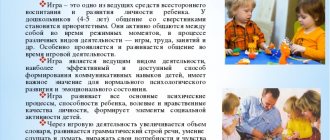Water is the basis of life
All living things are 75% water. This is the most necessary element of living nature. Water constantly circulates between the seas, atmosphere and land, creating conditions in which life can exist and develop.
Water, at first glance the simplest chemical compound, is the basis of life on Earth. Water transports heat, dissolves and transports colossal masses of chemicals and elements, destroys and redistributes rocks, forms landforms, and even participates in the formation of minerals. In addition, water is involved in a number of meteorological phenomena, such as precipitation, fog, clouds. It is involved in the creation of currents, waves, movement of river beds and the formation of reservoirs. It is also a living environment for many organisms.
A person can live without water for only a few days. For the normal functioning of all organs, a person needs at least 1.5 liters of water per day. Water delivers nutrients to the body's cells and carries away waste products. In addition, water is involved in the processes of thermoregulation and human respiration.
Under the rays of the Sun, water evaporates from reservoirs and rises into the air. There, droplets of water collect in clouds and clouds and fall to the ground in the form of rain or snow, which turns into water. It is absorbed into the earth and again returns to the seas, rivers and lakes. And everything starts all over again. the water cycle occurs in nature.
Water cycle in nature
What is the water cycle in nature
Scheme
The water cycle is a natural process that is a continuous exchange of moisture between the hydrosphere, atmosphere and earth's surface, consisting of the processes of evaporation, movement of water vapor in the atmosphere, its condensation in the atmosphere and precipitation.
This cycle involves a change in the state of aggregation of water: it changes its liquid or solid form to a gaseous one, and then after some time returns to its previous state. During this change, it takes up and moves a huge number of different organic and mineral compounds, which support life on Earth.
As you know, the most voluminous sources of water are the oceans. They contain about 97.5% of all the planet’s water reserves. It is for this reason that most natural liquids contain various salts. Fresh water sources account for 2.5% of the Earth's total water supply. If we take this 2.5% as 100%, then:
- glaciers and eternal snow masses make up 68.9% of them;
- underground and groundwater (this also includes soil moisture in swampy areas and permafrost zones) amounts to 30.8%;
- rivers and lakes account for only 0.3%.
How much and where?
There is a total of 1390 million km3 of water on the globe, most of it in the seas and oceans - 96.4%. On land, water is hidden in glaciers and permanent snow - about 1.86%. Antarctica, Greenland and many other islands in high latitudes are covered with eternal ice. In the mountains at high altitudes, mountain glaciers form. There is little water underground - only about 1.7% of the total volume, and land waters (rivers, lakes, swamps, reservoirs) account for approximately 0.02%. There is water in living organisms and in the atmosphere too. But there is little fresh water on the planet, which is so necessary for us to live - only 2.64%.
Land-ocean relationship
Composition of the earth's hydrosphere
Complex lesson in kindergarten for children of the preparatory group on the topic: Water
Complex lesson “Water, water, water all around.”
Preparatory group Goal: to develop in children a sense of responsibility for the fate of their Earth, a desire to personally participate in nature conservation. Objectives: 1. Cognitive development: - give children a general idea of water and its properties; — expand children’s knowledge about water as a habitat for animals and as an important natural resource; - consolidate the concepts of living and inanimate nature. 2. Speech development: - replenishment and activation of children’s vocabulary; - encouragement to actively use complex sentences in speech; — improving children’s speech, teaching them the ability to answer questions and the ability to ask them. 3. Social and communicative development: - cultivate a caring attitude towards water as one of the main sources of human life. 4. Artistic and aesthetic development: - formation of an aesthetic attitude towards the surrounding world, the ability to see and respond to its beauty. 5. Physical development: - develop children’s motor activity; - help relieve psycho-muscular tension. Materials: envelope, letter, assignments, globe, model of the relationship between land and water, opaque glasses, snow, ice, water, alcohol lamp, tweezers, soundtrack of rain, diagrams of the arrangement of molecules in solid, liquid and gaseous matter, rapana shells, Dunno wrist doll.
Progress of the lesson
Dunno, a hand puppet or teacher, is present at the lesson and actively participates in the lesson.
The postman brings a letter. Educator: -I wonder who the letter is from, let’s read it. Reading the letter: “Good morning, guys!
You know me well. Together with me you begin and end the day. We meet with you more than once during the day. Usually I am cheerful, mischievous, calm, but sometimes I am angry and dissatisfied, especially when a strong wind blows, thunder rumbles, lightning flashes. Then I become formidable and dangerous. But if the sun comes out, I’m cheerful and cheerful again. And if it gets cold, I'll be hard as a rock. Everyone really needs me! Who am I? Sorceress Water." Children's answers.
Educator: - Yes, children, this is water. Water is part of inanimate nature. Water is everywhere... Children read a poem about water by N. Ryzhova (one quatrain for each child). Have you heard about water? They say she's everywhere! In a puddle, in the sea, in the ocean And in a water tap. Like an icicle freezing, it creeps into the house like fog. It is called a glacier in the mountains, It winds like a silver ribbon Among the tall slender fir trees, It is destroyed by a stream of mudflows. It's boiling on the stove, the steam of the kettle is hissing. Dissolves sugar in tea - We don't notice it. We are accustomed to the fact that water is always our companion. Without it, we can’t wash ourselves, we can’t eat, we can’t get drunk! I dare to report to you: We cannot live without her. You will find it in the lake, and in a damp forest swamp. Our companion water always travels. Educator: - People really need water. For what? Children's answers. Educator: - Guys, look at the globe. You know that rivers, lakes, seas, and oceans are indicated in blue. There is 3 times more water on Earth than land. Show on model. Dunno: - Oh, how much water. And everywhere they say, save water, save water. Why take care of her? Educator: - Yes, there is a lot of water, but what kind of water is in the seas and oceans? Children's answers.
- Salty, that's right.
It is unsuitable for drinking, cooking, washing, and even factories need ordinary fresh water. And its reserves are mostly underground, and they are becoming less and less. Every year, March 22 is celebrated as World Water Day. Why? In order for people in all countries to take care of water, take care of it! Educator: - Children, there are also tasks for you in the envelope. The Water Sorceress wants to know how much you know about her. The first task “Where is the water?” Now I will name different words. If you hear a word that has to do with water, you will clap your hands. Tree, snow, rain, stone, stream, car, swamp, hail, sea, sand, waterfall, fog, wind, steam, ball, frost, paper, ice, dew, blanket, table, mudflow, feeding trough, cloud, rainbow, iceberg, telephone, river. Educator: - And now I propose to do the finger gymnastics “Rain”. The first drop fell - the children showed the drop from above to their fingers.
And the second came running - drop
the trajectory of the drops.
We looked at the sky,
looked up, everyone worked. The droplets sang drip-drip with their fingers
. Wet our palms,
show our palms,
We wiped them.
They quickly wipe their fingers.
Even look at the shoes -
they point down with their fingers,
They have already become wet.
spread their palms to the sides, shrug their shoulders (surprised)
Again a drop comes running,
the children point their fingers from above,
and another one hurries after it.
We will move
the trajectory of the drops , show them,
and shake off all the droplets.
shake off the drops
We will run away from the rain,
our fingers “run” across the table, then
we will sit under a bush.
clenched into fists. Educator: - The next task is “Guess what is hidden.” Children, on the table in front of you are three identical opaque cups. With your eyes closed, you have to guess what is there? How do you think we can find out? Having guessed what is in the first glass, the children take turns talking about what kind of water it is: colorless, tasteless, shapeless, clean, transparent, salty, fresh, spring... Dunno wants to determine what is in the second glass. Dunno: - Oh, I know, this is ice cream, only it is dietary, without sugar, but still delicious. The teacher calls another child. Educator: - What do you think this is? - snow Educator: - Dunno, how do you know that this is ice cream, and even without sugar? Dunno: - Where from? I've tried it more than once. Educator: - Children, look, before class we brought snow to the group. What kind of snow is there? Children's answers. White, cold, prickly, fluffy, loose, sparkling, sticky, wet, silver... Dunno: - Delicious! Educator: - Children, look what happened to the snow? - And what do we see? Guys, never eat snow. Besides being cold, it is also dirty. When snow falls, it absorbs the smallest particles of dust, dirt, smoke from factories, factories, car exhaust gases... Dunno: - Oh, oh, oh, I'm going to get sick now. Educator: - I hope, Dunno, you won’t get sick, but don’t eat snow anymore. Educator: - Who can guess what we have in the third glass? Yes, it's ice. Now guess the riddle “It does not burn in fire and does not sink in water” (ice). An experiment is carried out: take an alcohol lamp, tweezers, a transparent container with water, ice. Educator: - Children, what kind of ice is there? Give definitions. Children's answers. -Slippery, transparent, hard, iridescent, cold... Educator: - Guys, tell me, why is water a magician? Children's answers. Educator: - Yes, it can be in different states: in liquid - water, in solid - ice, in gaseous - steam. Tell me, can we get ice from water? How to get steam? How to get water from ice? Children's answers. Educator: - Well done. Now let's play. The game “Droplets go in circles.” (Cheerful music sounds)
Droplets splashed and frolicked in the sea.
They got bored and wanted to take a walk. We took off from the surface of the water and flew to visit the clouds and clouds. There were a lot of droplets, and a new cloud formed. She floated along with other clouds over the forests, over the mountains, fields, meadows... The droplets saw the river and poured a cheerful rain. They frolicked with the other droplets, splashed around, played and wanted to go for a walk again. And they reached up to the clouds... Educator: - Children, what is the name of the game we played? - “The droplets are going around in circles.” Exercise. Riddles about water. Children, having guessed the riddle, choose the appropriate illustration (you can take 4-5 riddles).
The village is in white velvet - And fences and trees.
And when the wind attacks, this velvet will fall off. (frost) In the morning the beads sparkled, They covered all the grass with themselves, And we went to look for them in the afternoon, We search and search, but we won’t find them. (dew) A bag of water flew above me, above you. Ran into a distant forest, lost weight and disappeared. (cloud) Green meadows need me, fields and forests need me, flowers and bushes need me. And if I’m suddenly late, everything around withers and dries up. (rain) There is a commotion in the yard - peas are falling from the sky. Nina ate six peas. She now has a sore throat. (hail) Doesn't burn in fire and doesn't sink in water. (ice) It is fluffy and silver. But don’t touch it with your hand: It will become a drop of clean, As soon as you catch it in the palm of your hand. (snow) The children sat on the ledge and grew all the time downwards. (icicle) It curls around the ground like a snake. It doesn’t fall into people’s hands. Runs along from afar This blue... (river) Everyone goes around this place, Here the earth is like dough. There is sedge, hummocks, mosses... There is no support for the feet. (swamp) In a blue shirt, running along the bottom of a ravine. (stream) This ice floe is comparable to a huge house. Captain, look ahead, otherwise the ship will sink. (iceberg) (author L.K. Shestoperova)
A stream moves from the mountain: Stones, mud, water, sand.
He is dangerous, believe me, And his name is... (silver) (by Shestoperova L.K.)
What is that roar, what is that noise?
Could it be a rockfall? It rushes... (waterfall) (author L.K. Shestoperova)
Smoke flows over the river, Everything around has become gray.
I don't see anything, take it away quickly. (fog) (author L.K. Shestoperova) Educator: - Children, the Water Sorceress wants to know, do you know fairy tales where water is found in different states - snow, hail, ice...? Children's answers.
- “The Snow Queen”, “Sister Fox and the Gray Wolf”, “Snow Maiden”, “Moroz Ivanovich”...
Dunno: - Guys, what are these circles you have drawn? Educator: - Children, you know that water consists of tiny droplet particles, they are called molecules. In ice, in water and in steam, the molecules are connected differently. If we take ice, then they are very close, tightly to each other; if we take water, then the molecules are further away from each other; and if we take pairs, then they are far from each other. Educator: - Let's play the game “Ice-Water-Steam”. The teacher says:
“ice” - children should stand close to each other, “water” - at a short distance from each other, “steam” - run easily on their toes.
The game is played 2-3 times. Relaxation. Educator: - Guys, I suggest you relax a little. Imagine that you are on the seashore - the sun is shining, the waves are splashing, the seagulls are screaming... Let's take the rapana shells, put them against your ear, close your eyes and listen to the sound of the sea surf. Educator: - And now I’ll tell you the fairy tale “About the Fisherman and the Fish” in a modern way. Starit throws a net into the sea, but catches either tin cans, a torn shoe, bags... The third time he caught a goldfish. What do you think she asked for? Children's answers. Educator: - No, guys, she asked the old man to put her in an aquarium. Why? Children, rivers, seas and oceans disappear. All ships throw garbage into the water. But water, both river and sea, is a home for animals. Fish, animals, birds are dying... And this should not continue. Dunno: - So what should we do? Educator: - Children, how do you think we can help nature? Children's answers. Educator: - Children, the Water Sorceress gives you homework - draw reminder signs about the rules of behavior in nature, at home in relation to water. Educator: - Children, I think the Water Sorceress is very pleased with you. She knows that you will always save water and invites you to tea. And we invite you, Dunno, too. Dunno: - Thank you, I really liked your work, I learned so much. Can I come to you again? Educator: - Of course, Dunno, come!
We recommend watching:
Abstract of the GCD on the topic: Winter for children of the preparatory group. Summary of a lesson on speech development for children of the preparatory group. Early spring Summary of GCD in the preparatory group on the topic: Circus. Speech development Joint activity for children of the preparatory group. Travel through fairy tales
Similar articles:
Summary of the lesson “Take care of nature” in the preparatory group
Three states of water
Substances, depending on their freezing, melting and boiling temperatures, can be found in nature in three states of aggregation - solid , liquid and gaseous . Water freezes at 0°C and boils at 100°C.
In everyday life, we can encounter water in any of its three states, and its form is constantly changing. Liquid water evaporates and turns into a gaseous state - water vapor. It condenses and turns into liquid. At sub-zero temperatures, water freezes and turns into solid ice.
If we place table salt crystals in a vessel with water, we will be able to observe how the amount of solid substance gradually decreases. At the same time, water acquires new properties: it acquires a salty taste, density and freezing point change. The resulting liquid can no longer be called water, it is a solution. Intermolecular bonds arise between salt and water molecules, due to which salt molecules are detached from the surface of the crystal.
Varieties of the cycle
The cycle has several subspecies, each of which has certain characteristic features:
- Big cycle. This is what they teach in school. The water first evaporates, then concentrates as steam. Next, the masses of steam rush into the layers of the atmosphere, from where they are driven by the wind to land. Moisture falls on the soil surface in the form of precipitation. After this, the flows accumulated in rivers and soil layers move back into the ocean basin.
- Small circulation. Clouds of steam rising above the ocean fall as precipitation over the same ocean, and not over land.
- Inland cycle. All stages of the cycle occur over land. Moisture evaporating from the ground is shed as precipitation on the same soil.
- Geological cycle. This is a term that refers to the mutual exchange of water masses between different oceans, land and lithosphere. Typically, this process occurs in zones of tectonic cracks located at the junction of lithospheric plates.
- Global circulation. This is an open cycle, during which there is an influx of moisture into the hydrosphere through tectonic cracks. During the year, about 0.25 km3 accumulates during this process. At the same time, some of the vapor molecules that have accumulated in the atmosphere rush into space, turning into oxygen and hydrogen.
Artesian water
Agree, it is somewhat unusual to call water a mineral: it is all around us, flowing in streams and rivers, splashing in the seas and oceans, even pouring from the sky. And yet this name is correct. Think about wells and artesian wells. Isn't it necessary in these cases to extract water literally from underground? Artesian water is water located at a depth of 50-200 m and enclosed between impermeable layers. Such water is reliably protected from external pollution.
Well structure
Energy source
Water is an important source of energy. The power of moving water is very high, so it is used to generate electricity. Hydroelectric power plants are built where water moves at high speeds, such as rivers. In addition, artificial structures, such as dams, which create water movement, can also be erected.
Construction of a hydroelectric power station
Water flowing from the upper level to the lower level through special turbine pipelines acquires greater speed. The stream of water then flows onto the blades of the hydraulic turbine and rotates them. This is how energy turns into mechanical energy. The generator connected to the turbine rotates and the mechanical energy becomes electrical. Transformers convert electricity into the required voltage. Electricity is sent through transmission lines to distribution stations.
Share link





